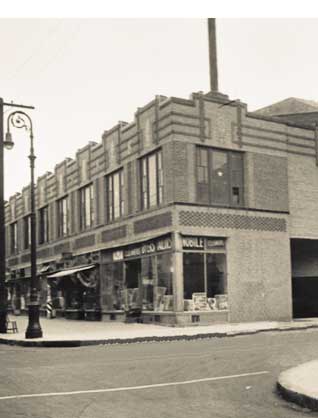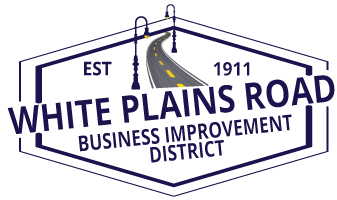An Area Rich in History
Pelham Parkway’s official name is the Bronx and Pelham Parkway since it connects Bronx Park and Pelham Bay Park; it is also an integral part of the Mosholu-Pelham Greenway. Pelham Parkway was established in 1911 and was originally only one lane which is today’s westbound lane. The parkway was lined with trees on both sides and had a strict building code. Nobody was allowed to build within 150 feet of the center. No railroads were allowed to cross over the parkway; this is why the roadbed of the New Haven Railroad had to be laid in a tunnel underneath the parkway which is now the Dyre Avenue subway line. Bars and hotels are also prohibited from being built alongside the parkway. Land in 1900 cost between $3500 and $5000 for one lot; near Bronx Park the prices were even higher.
Pelham Parkway Today
The parkway was constructed in the 1930s and is 2.3 miles in length and 400 feet wide and features wide expanses of lawn with full canopies of trees. The center of the parkway, prior to WW II was closed off on Sunday mornings for professional bicycle racing; today, there is a bicycle path along the westbound lanes of the parkway.
Pelham Parkway/White Plains Road Station
Built in 1916, the Pelham Parkway Station is part of the #2 White Plains Road subway line. This station is unique within the New York City Transit System in its appearance and siting and has been cited for these features by New York State’s Office of Parks, Recreation and Historic Preservation. The structure, decorated with tile work patterns and banding set into concrete facades, spans Pelham Parkway’s greenbelt making it an imposing piece of civic architecture. It is the only station within the NYC Transit System that is built over parkland.
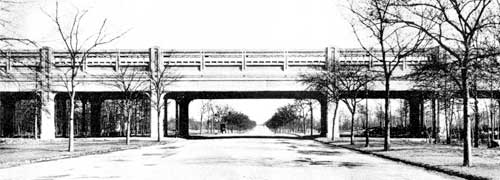
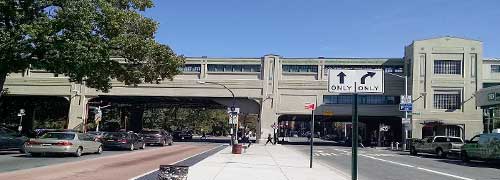
Bronx Park
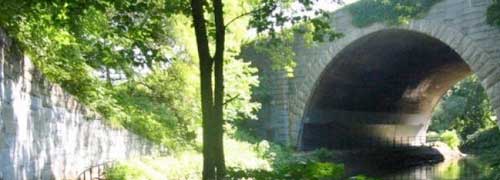
Bronx Park is a 718 acre recreational facility that runs along both sides of the Bronx River and the Bronx River Parkway. As the entire borough, it is named after Jonas Bronck who settled the area in 1639. In 1891, 250 acres were allotted to the New York Botanical Society (The New York Botanical Garden) and another 250 acres were allotted to the New York Zoological Society in 1895 (Bronx Zoo); these areas are located on the westside of the Bronx River. Bronx Park’s additional land is dedicated to recreational areas including playgrounds, bicycle paths, tennis and basketball courts and baseball, soccer and football fields for the use of the local residents.
Bronx Zoo
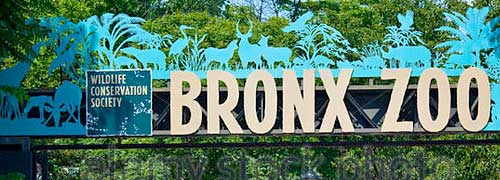
The Bronx Zoo is a subsidiary of the Wildlife Conservation Society which was founded in 1895 as the New York Zoological Society. The Bronx Zoo opened to the public in 1899 and still adheres to its original mission to advance the study of zoology, protect wildlife and educate the public. The zoo is a leader in the care, feeding and exhibition of animals–including mammals, birds, reptiles and amphibians from around the world. With the award winning Congo Gorilla Forest, Tiger Mountain, Jungle World and Baboon Reserve, the Bronx Zoo has earned its place as one of the foremost zoos in the world.
Bronx River
The Bronx River got its name from Jonas Bronck who owned much of the land around it. The name for the borough, which became part of New York City in 1898, was taken from this river. The Lenape, Wackquaskeck and Sivanoy Indian tribes used the Bronx River for travel.
Dr. Cadwalder Colden
Dr. Cadwalder Colden came to the Bronx in the late 1880’s to study Indian habits. He later became an active member of the city council and wrote a book entitled, “History of Indian Nations”. Colden Avenue, which is named after the doctor, passes by three schools: P.S. 89, The New York Institute for Special Education and Christopher Columbus High School.
Morris Park Race Track
When the Jerome Park Race Track was torn down to make way for the Jerome Reservoir, the Morris Park Race Track was conceived and built by Leonard Jerome and John A. Morris in what was then Westchester County and opened in 1889. The race track would have been bounded by what is today Pelham Parkway South, Williamsbridge Road, the Dyre Avenue subway tracks and Bronxdale Avenue. The track prospered in the 1890s because it was easily accessible by the New Haven Railroad (original owner of the subway tracks). The Belmont Stakes were run here. However, upon the opening of Belmont Race Track and the transfer of the Belmont Stakes to that track along with a major financial setback suffered by Mr. Morris the Morris Park Race Track started to go downhill and in 1903 declared bankruptcy. New York City annexed it and kept it open for auto racing and aircraft shows. On May 9th, 1910 a huge fire fed by high winds engulfed the track and its buildings and sealed its demise.
Pelham Parkway/Williamsbridge Road Station
The subway station is a one-story building containing two stores and the subway entrance. Formerly part of the New York, Boston and Westchester Railroad, a commuter line that went bankrupt in the depression, this station was built specifically by the New Haven Railroad to deliver passengers to the Morris Park Race Track. A four mile stretch of the railroad was acquired by New York City Transit in 1941 and became part of the #5 Dyre Avenue subway line.
Tracts of Land
Land around Pelham Parkway was owned by large landowners. The Pearsalls owned a large tract on the southeast side of the parkway near Williamsbridge Road. Adjoining it, on the northeast, was the suburban settlement Westchester Heights. On the northwest side of this area was the land tracts owned by John Jacob and William Waldorf Astor. Hence, Pearsall Avenue, Astor Avenue, Morris Park Avenue, etc. A large tract of land on the southwest side of the parkway was owned by the New York, New Haven and Hartford Railroad Company and was used as a freight yard.
Bronx Municipal Hospital
Bronx Municipal Hospital is really two hospitals, Jacobi Medical Center and Van Etten Hospital; these hospitals are part of the NYC Health and Hospitals Corporation (HHC). It is located at the intersection of Pelham Parkway South and Eastchester Road.
Pelham Heath Inn
At the junction of Eastchester Road and Pelham Parkway South was the famous nightclub, The Pelham Heath Inn. Top bands played here and were broadcast from coast to coast. The inn closed in 1952. Aging in America now stands on that site.
Pelham Bay Park
Pelham Bay Park is New York City’s largest park at 2,700 acres. It was originally home to the Siwanoy Indians but was sold to the Dutch West India Company in 1639 and later purchased by Englishman Thomas Pell in 1654. In 1888, thanks to the efforts of John Mullaly, Bronx resident and founder of the New York Parks Association, the city acquired the land. Today, the most popularly known sections of the park are The Bronx Victory Column and Memorial Grove, Orchard Beach, The Bartow-Pell Mansion and Museum, and the Pelham-Split Rock Golf Courses. In addition there are several significant natural habitats which serve as refuges to a diversity of wildlife.
This history was compiled by Michael Prospect as his Eagle Scout Service Project in December, 1975. (Eagle Scout Project Committee members: Gary Armocida, Allan Beller, Eric Bomze, Richard DiTomasso, Nicholas Pipolo, Ted Prospect, Eddie Sherwood, Michael Sherwood, Steven Tellm ar and Eddie Tishelman. Special thanks to Andrew Wolf, Shirley Bomze, Louis Sullo, Jr. Additional material supplied by the Bronx Historical Society, Bronx Zoo, The New York Botanical Garden, New York Department of Parks and Recreation. Horseracing.about.com, NYC Roads and Wikipedia.
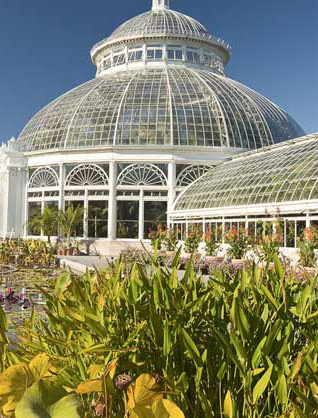
Our Community

